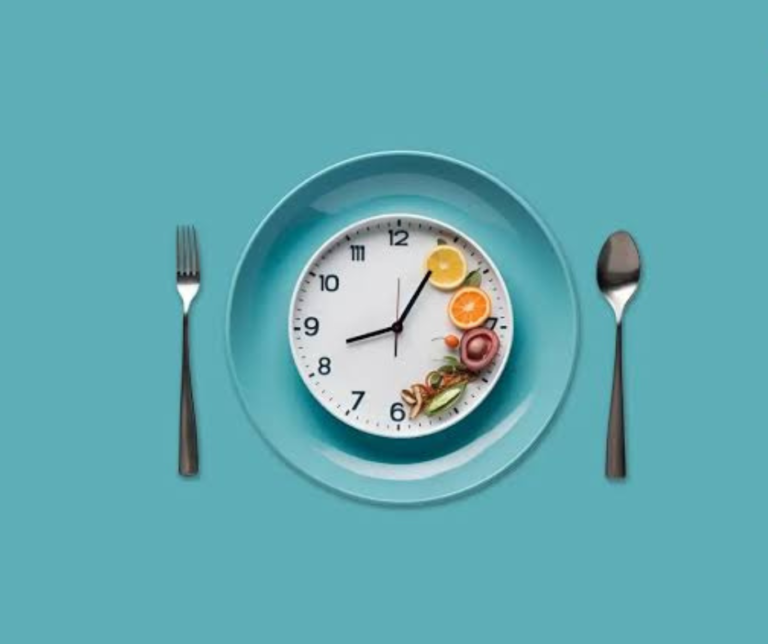Struggling to lose weight despite trying hard? Discover the most common weight loss mistakes people make—and how to fix them for better, lasting results.
Introduction
Losing weight isn’t just about eating less and moving more—it’s about doing it the right way. Many people follow restrictive diets, overtrain, or skip meals, only to end up frustrated by a lack of progress. Sound familiar?
The truth is, even with good intentions, it’s easy to fall into traps that hinder your progress.
In this comprehensive guide, we’ll explore the most common weight loss mistakes—backed by science—and provide practical solutions to overcome each one. So if the scale isn’t budging or you feel stuck in your fitness journey, this article is for you.
1. Skipping Meals (Especially Breakfast)
Many people think that skipping meals—especially breakfast—will save calories and accelerate weight loss. However, studies show that skipping meals can lead to:
- Slowed metabolism
- Poor energy levels
- Overeating later in the day
Fix: Eat a Balanced, Protein-Rich Breakfast
Include foods like eggs, Greek yogurt, oats, or a protein smoothie. This sets the tone for your day and keeps hunger in check.
Tip: Eating breakfast with at least 20–30 grams of protein can reduce cravings and prevent overeating.
2. Eating “Healthy” but High-Calorie Foods in Excess
Foods like nuts, avocados, granola, peanut butter, and smoothies are healthy—but high in calories. Eating them without portion control can lead to a calorie surplus.
Fix: Be Mindful of Portions
- Measure servings using a kitchen scale or measuring cup
- Read nutrition labels
- Track intake using apps like MyFitnessPal
Example: 2 tablespoons of peanut butter = ~190 calories. It’s easy to scoop 3–4 tbsp without realizing it.
3. Relying Only on Cardio
Cardio is great for burning calories, but relying on it exclusively can lead to muscle loss, reduced metabolism, and a plateau.
Fix: Include Strength Training
Weight training helps build lean muscle, which increases your resting metabolic rate (RMR). This means you’ll burn more calories even at rest.
Aim for 2–4 resistance training sessions per week, focusing on full-body workouts.
4. Setting Unrealistic Expectations
Setting goals like “lose 10 kg in 2 weeks” leads to disappointment and can cause people to give up entirely.
Fix: Set SMART Goals
- Specific
- Measurable
- Achievable
- Realistic
- Time-bound
A healthy rate of weight loss is 0.5–1 kg per week. Focus on progress, not perfection.
5. Drinking Calories
You might be eating well, but drinking high-calorie beverages like:
- Sugary sodas
- Fruit juices
- Alcohol
- Creamy coffee drinks
These beverages can silently add hundreds of calories daily.
Fix: Choose Low-Calorie or Zero-Calorie Drinks
- Water
- Sparkling water
- Black coffee or green tea
- Herbal teas
Bonus: Drinking water before meals can reduce calorie intake and improve digestion.
6. Not Getting Enough Sleep
Sleep deprivation can:
- Increase hunger hormones (ghrelin)
- Decrease satiety hormones (leptin)
- Crave sugar and processed food
- Lower energy for workouts
Fix: Prioritize Sleep
Aim for 7–9 hours of quality sleep per night. Maintain a regular bedtime routine and avoid screens before bed.
Studies show people who sleep well are 55% more likely to succeed in their weight loss goals.
7. Being Too Restrictive
Cutting out entire food groups or following fad diets may give quick results, but they’re not sustainable. They also lead to nutrient deficiencies and binge eating.
Fix: Practice Flexible Dieting
Allow room for treats occasionally. Focus on the 80/20 rule:
- 80% whole, healthy foods
- 20% favorite indulgences
You’re more likely to stick to a plan you enjoy and don’t feel deprived of.
8. Not Tracking Your Food Intake Accurately
Even small miscalculations can lead to eating more calories than you think.
Fix: Log Everything Honestly
- Track all meals, snacks, and drinks
- Weigh portions when possible
- Don’t forget condiments, oils, sauces
Apps like LoseIt, MyFitnessPal, or Cronometer help improve awareness and accuracy.
9. Eating Too Little (Starvation Mode Myth)
While extreme calorie restriction may cause weight loss at first, it eventually leads to:
- Metabolic adaptation
- Loss of lean muscle
- Hormonal imbalances
- Energy crashes
Fix: Eat Enough to Support Your Goals
Use a TDEE calculator to determine your calorie needs. Never go below 1200 calories/day for women or 1500 for men, unless under medical supervision.
Sustainable fat loss is about nourishing your body, not depriving it.
10. Inconsistent Physical Activity
Exercising 5 days one week, then taking the next week off won’t deliver results. Consistency beats intensity.
Fix: Create a Schedule
- 3–5 days of movement per week
- Mix cardio, strength training, and flexibility
- Even 30 minutes a day can make a big difference
Hack: Put workouts in your calendar like important appointments.
11. Stress Eating or Emotional Eating
Stress, boredom, and emotions often lead to mindless eating—usually of comfort foods high in sugar and fat.
Fix: Identify Triggers & Develop Alternatives
- Keep a food and mood journal
- Practice stress-reduction techniques: yoga, meditation, deep breathing
- Have healthy snacks available
- Drink water or herbal tea before reaching for food
12. Not Drinking Enough Water
Dehydration can be mistaken for hunger and may slow metabolism and fat oxidation.
Fix: Stay Hydrated
- Drink 2–3 liters daily
- Carry a reusable water bottle
- Add lemon, mint, or cucumber for flavor
Bonus: Water helps detox, improves digestion, and boosts energy.
13. Overeating “Cheat Meals”
One large cheat meal can easily undo a week of progress if you go overboard with calories.
Fix: Plan Treats Without Guilt
- Practice portion control
- Balance indulgence with activity
- Try making healthier versions of your favorite meals
Remember, one meal won’t make or break you—consistency over time is key.
14. Weighing Yourself Too Often
The scale reflects water weight, digestion, hormones—not just fat. Daily fluctuations are normal.
Fix: Use Multiple Progress Markers
- Take photos every 2–4 weeks
- Measure waist, hips, and thighs
- Track how clothes fit
- Note improvements in energy and mood
Weigh yourself no more than once a week at the same time, ideally in the morning.
15. Giving Up Too Soon
Weight loss takes time. People often quit when they don’t see results in 2–3 weeks.
Fix: Stay Committed and Patient
- Track non-scale victories
- Focus on healthy habits, not just the number on the scale
- Celebrate small wins
- Trust the process and don’t compare yourself to others
Conclusion: Progress Over Perfection
Weight loss isn’t a straight line. It’s a journey full of learning, tweaking, and growing. Most people make mistakes along the way—but the key is to recognize them and adjust.
By understanding the common pitfalls and implementing the right strategies, you can break through plateaus, stay motivated, and achieve lasting results.
Quick Recap of Fixes:
- Eat balanced meals, especially breakfast
- Don’t overeat healthy foods
- Combine cardio with strength training
- Prioritize sleep and hydration
- Track progress and food intake honestly
- Avoid crash diets and stay consistent
Remember, the most effective plan is one you can stick with. Focus on building habits you enjoy, and success will follow.
Want more weight loss content? I can also write:
- “Why You’re Not Losing Belly Fat & How to Fix It”
- “The Truth About Metabolism: How to Speed It Up”
- “Intermittent Fasting for Beginners: Science, Benefits, and Meal Plan”
Let me know what you’d like next!







